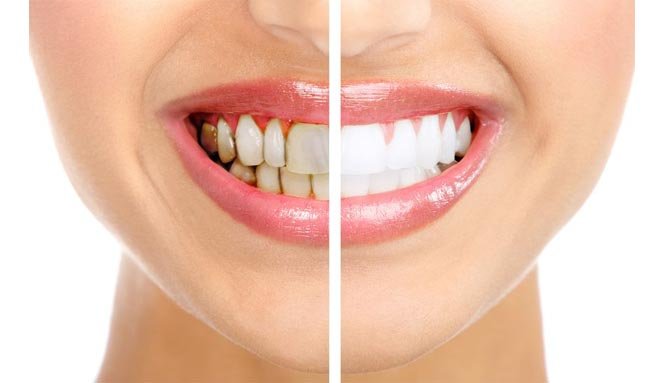A bright, white smile is one of the most sought-after cosmetic goals, but with so many teeth whitening options available, it can be difficult to decide which treatment is right for you. Two of the most popular methods are laser teeth whitening and traditional teeth whitening, including in-office and at-home treatments. Each comes with its own set of benefits, drawbacks, and costs. In this post, we’ll compare both approaches to help you determine which option best suits your needs.
What Is Laser Teeth Whitening?
Laser teeth whitening is a professional, in-office treatment that uses a whitening gel activated by a laser or specialized light source. The laser speeds up the bleaching process, breaking down stains more effectively and delivering immediate, noticeable results—often in just one session.
How It Works:
- A protective barrier is placed on the gums.
- A high-concentration hydrogen peroxide gel is applied to the teeth.
- A laser or LED light activates the gel to accelerate stain removal.
- The gel is left on for 15–30 minutes, often reapplied in multiple sessions during the same visit.
What Is Traditional Teeth Whitening?
Traditional teeth whitening includes:
- In-office treatments without lasers (e.g., Zoom whitening)
- At-home whitening kits provided by dentists
- Over-the-counter products like whitening strips or toothpaste
These methods typically use carbamide or hydrogen peroxide but do not involve light or laser activation.
Types of Traditional Whitening:
- Professional Take-Home Kits: Custom-fitted trays with stronger bleaching agents.
- In-Office Whitening (Non-Laser): Similar to laser whitening but without the light activation.
- Store-Bought Kits: Less potent gels or strips that require daily application for 1–2 weeks.
Laser Whitening vs. Traditional Whitening: Key Differences
| Feature | Laser Whitening | Traditional Whitening |
|---|---|---|
| Speed | One session (30–60 minutes) | Multiple sessions over days/weeks |
| Effectiveness | Dramatic results (up to 8 shades lighter) | Gradual results (2–4 shades lighter) |
| Longevity | 1–3 years with good oral care | 6 months to 1 year |
| Sensitivity | Mild to moderate, temporary | Varies by product, often less intense |
| Cost | $$$ (More expensive) | $$ (More budget-friendly) |
| Supervision | Always performed by a dentist | Can be supervised or DIY |
Benefits of Laser Teeth Whitening
- Fast results: Perfect if you need a whiter smile for an upcoming event.
- Uniform whitening: Because it’s applied by a professional, results are even.
- Safe and precise: Dentists protect your gums and manage sensitivity.
Benefits of Traditional Whitening
- More affordable: Great for budget-conscious patients.
- Flexible use: Can be done at home on your own time.
- Good for mild discoloration: Suitable for maintaining whiteness after in-office treatment.
Which Whitening Option Is Best for You?
Choosing between laser and traditional whitening depends on your goals, budget, and timeline.
- Choose Laser Whitening if:
- You want immediate, dramatic results.
- You’re preparing for a big event (wedding, photoshoot).
- You have moderate to severe staining.
- You prefer in-office, supervised treatments.
- Choose Traditional Whitening if:
- You’re looking for a gradual, cost-effective solution.
- Your teeth are only mildly discolored.
- You’re maintaining results after professional whitening.
- You prefer at-home convenience.
Professional Tip: Combine Both for Long-Lasting Results
Many patients opt for a laser whitening session followed by custom trays for touch-ups at home. This combination maximizes results and maintains brightness longer.
Final Thoughts
Both laser and traditional teeth whitening can effectively enhance your smile—what matters most is choosing the right method for your needs. If you’re unsure, consult with a cosmetic dentist to evaluate your oral health, type of staining, and lifestyle factors.
Ready to Brighten Your Smile?
Schedule a consultation today to find the best whitening option tailored just for you.




